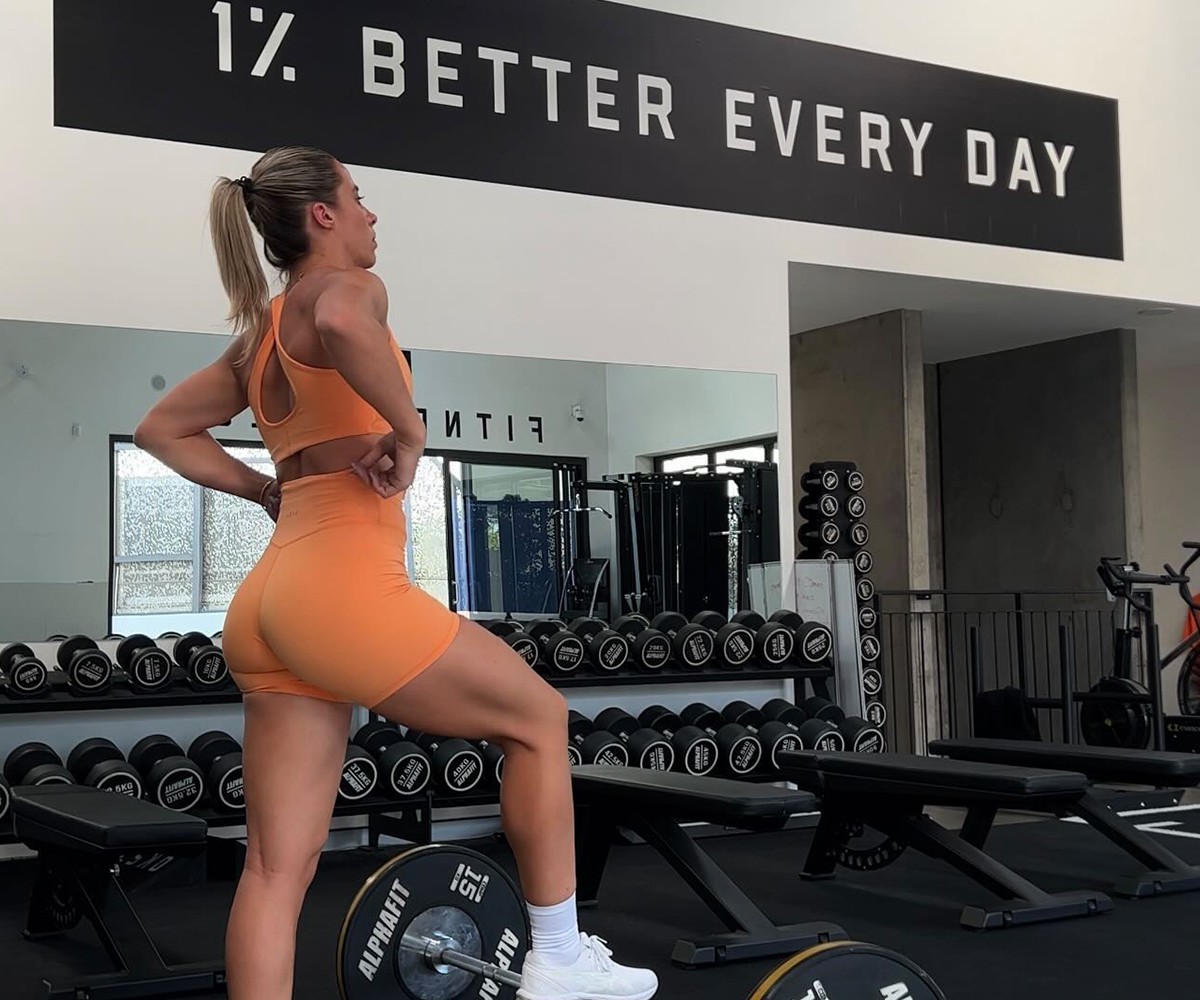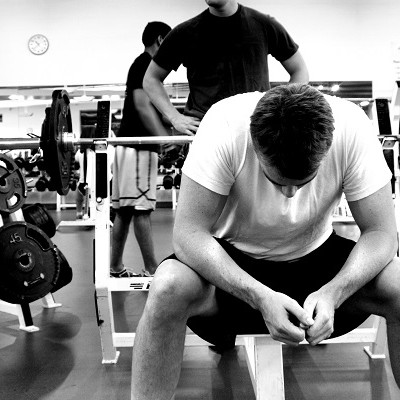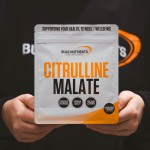Five Tips to Respark Your Gym Motivation

1. Take 7-10 days off working out
I bet you’re sitting there thinking that’s probably the stupidest thing you’ve read in weeks.
But hear me out: remember that old saying; “distance makes the heart grow fonder?”
Well, turns out it makes your muscles fonder, too.
This study found that time away from the gym reset our muscle’s ability to adapt to training better (i.e., grow).
The authors found that seven sessions of weightlifting, when conducted three times per week, was enough to significantly reduce the markers of muscle growth. In other words, it was hard for the subjects to get growing muscle.
But when the study subjects took ten days off, the markers of muscle growth refreshed, meaning muscles were primed for gains again.
It means that more gains might be made by having this time off than continuously slugging it out at the gym!
Might sound unbelievable, but it’s also science!
And if you’re anything like me, you can’t stand time out of the time. But you must rest assured it's doing you good.

2. Listen to music
People laugh at me for NOT listening to music. “You’re the ONLY one in here without headphones?!” they gasp.
Now I can slug it out without music most days, opting instead for the same commercial rubbish on the big screens and chatting between sets.
But there are some days when that isn’t enough.
So that’s when we can call upon our music via the best pair of headphones we have. If you want to do this every day, fine, but if you don’t, introducing it when you need it is an amazing addition.
Science has a lot to say about us listening to music and training, too.
Research shows that music synchronised with exercise means we’re more motivated to train and can do so for longer.
Additional research suggests when we engage in low-to-moderate exercise, faster pace music improves our athletic performance by increasing how far we can run or how many reps we can perform.
This study found that fast-paced music also increased pace and distance, but with subjects NOT becoming more tired!
What's clear is how tempo affects how effectively we can exercise, and researchers have examined this in the context of different exercise activities:
Cycling: To achieve the best performance, the ideal tempo is between 125-140 beats per minute.
Treadmill: Between 123 and 131 beats per minute.
The suggestion is that different tempos are better for different exercises because of our ability to keep time with the music: either pedalling or running to it. We obviously have different paces and intensities during different cardio workouts.
Deeper research finds music increases performance in two ways:
- It delays fatigue
- It increases work capacity
The researchers concluded that music can induce:
“...higher-than-expected levels of endurance, power, productivity, or strength.”
Our perception of pain is reduced because music simply distracts us because of the competing sensory stimuli.

3. Choose more challenging exercises
So, maybe it’s time to bring back squats or deadlifts.
Maybe you need to focus on exercises that are more testing. For example, for your lats, are you aware of the lat prayers?
They stretch out your lats and force them to lift in a way your lat pulls downs and rows just don’t.
Lat prayers are best explained by you watching the video below. As you'll see, lat prayers really isolate the lats and make them work:
YouTube: How to do Lat Prayer
So, what's so special about lat prayers? Why are they so effective?
Here is what to remember when performing lat prayers:
Let's start with one of the three principles of muscle growth: mechanical tension. Mechanical tension basically refers to generating as much muscle power as possible with a difficult weight and good form.
A great way to induce mechanical tension is to maximise muscle tension throughout maximal muscle length, which isn't just lifting weight through a full range of motion (ROM). A complete ROM doesn't always mean maximal muscle length in the context of certain exercises, with the lats being a good example.
We want to be performing at least some exercises that maximise muscle length, and we achieve this by doing exercises that induce stretch-mediated hypertrophy.
And stretch-meditated hypertrophy can occur when a muscle is forced to endure high muscle tension from a fully shortened to a fully lengthened position.
This is why lat prayers are so effective; they allow for stretch-mediated hypertrophy.
This is possible due to the lats producing the most tension during a shoulder extension, which is what they're doing during a lat prayer.
So, think about this with all muscle groups, and try and find one exercise for each workout that might challenge you more.

4. Bring a partner
Meeting your gym buddy there or bringing a friend is a great way to keep up motivation.
Even just catching up with somebody; the pair of you can push each other and allow for a better experience. Some healthy competition never hurt anyone, and you want to make sure you’re lifting as much as your buddy who's “just getting back into it.”
So don’t let them show you up!

5. Get a new supplement
I cycle on and off pre-workout.
I make my own with the raw ingredients of Beta Alanine, Creatine Monohydrate and Citrulline Malate. Then I add black coffee and a deep breath, and I’m there!
You know all about the scientific benefits of these ingredients, I’ve written extensively about them before. There’s no hocus pocus about them, they work.
So, when you’re feeling flat, and need a boost, get hold of a great pre-workout. The difference is night and day!

The bottom line on finding motivation
Motivation comes and goes when you’re training at the gym. The best thing is to recognise this and plan accordingly. I find that taking 7-10 days off to prime the muscles again is a great strategy, along with listening to music if you don’t already.
Also, choosing more challenging exercises that allow for stretch-mediated hypertrophy can respark motivation. Training with a partner can also fire you up again, as can getting a new supplement like a pre-workout.
With those five tips, motivation might be something you benefit from all year!

Dayne Hudson
Like many, Dayne was once desperate to lose weight and get into shape. But everyone he asked, everything he read, lead to the same place... nowhere.
His journey started there - researching science journals and completing a Sports Nutrition Specialist qualification so he could make weight loss easier.
References:
- Altenmüller, E., & Schlaug, G. (2012). Music, brain, and health: Exploring biological foundations of music’s health effects. In R. A. R. MacDonald, G. Kreutz, & L. Mitchell (Eds.), Music, health, and wellbeing, 12-24. New York: Oxford University Press.
- Edman KA, Reggiani C. The sarcomere length-tension relation determined in short segments of intact muscle fibres of the frog. J Physiol. 1987;385:709-732. doi:10.1113/jphysiol.1987.sp016516
- Jacko, D.; Schaaf, K.; Masur, L.; Windoffer, H.; Aussieker, T.; Schiffer, T.; Zacher, J.; Bloch, W.; Gehlert, S. Repeated and Interrupted Resistance Exercise Induces the Desensitization and Re-Sensitization of mTOR-Related Signaling in Human Skeletal Muscle Fibers. Int. J. Mol. Sci. 2022, 23, 5431. https://doi.org/10.3390/ijms23105431
- Judy Edworthy & Hannah Waring (2006) The effects of music tempo and loudness level on treadmill exercise, Ergonomics, 49:15, 1597-1610, DOI:10.1080/00140130600899104
- Karageorghis, C. & Jones, L. (2014). On the stability and relevance of the exercise heart rate-music-tempo preference relationship. Psychology of Sport and Exercise, 15(3), 299-310.
- Karageorghis, C. I., Jones, L., Priest, D. L., Akers, R. I., Clarke, A., Perry, J. M., et al.(2011). Revisiting the exercise heart rate-music tempo preference relationship. Research Quarterly for Exercise and Sport, 82, 274-284.
- Karageorghis, C.I., & Priest, D.L. (2012). Music in the Exercise Domain: A Review and Synthesis (part II). International Review of Sport and Exercise Psychology, 5(1), 67-84.
- Karageorghis, C.I., Priest, D.L., Williams, L.S., Hirani, R.M., Lannon, K.M., & Bates, B.J. (2010). Ergogenic and psychological effects of synchronous music during circuit-type exercise. Psychology of Sport and Exercise, 11(6), 551-559.
- Maeo S, Huang M, Wu Y, Sakurai H, Kusagawa Y, Sugiyama T, Kanehisa H, Isaka T. Greater Hamstrings Muscle Hypertrophy but Similar Damage Protection after Training at Long versus Short Muscle Lengths. Med Sci Sports Exerc. 2021 Apr 1;53(4):825-837. doi: 10.1249/MSS.0000000000002523. PMID: 33009197; PMCID: PMC7969179.
- North, A. & Hargreaves, D. (2008). Music and Physical Health, In The Social and Applied Psychology of Music, pp. 301-311. Oxford: Oxford University Press.
- Park SY, Yoo WG. Differential activation of parts of the latissimus dorsi with various isometric shoulder exercises. J ElectromyogrKinesiol. 2014 Apr;24(2):253-7. doi: 10.1016/j.jelekin.2013.12.004. Epub 2013 Dec 31. PMID: 24462394.
- Schoenfeld BJ. The mechanisms of muscle hypertrophy and their application to resistance training. J Strength Cond Res. 2010 Oct;24(10):2857-72. doi: 10.1519/JSC.0b013e3181e840f3.
Related Blogs

How to Get Started at the Gym
Posted by Nicole Frain
Estimated reading time: 4 minutes

Want to Improve Yourself? Start With Your Posture!
Posted by Bridget Freeman
Estimated reading time: 2 minutes

Be Your Own Motivation
Posted by Nicole Frain
Estimated reading time: 5 minutes
































